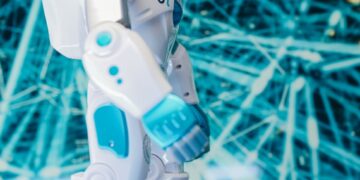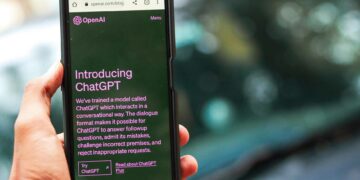The buzz surrounding generative artificial intelligence has been deafening, often painting a picture of either utopian efficiency or dystopian job loss. But beyond the sensational headlines and theoretical discussions, a significant transformation is quietly underway in daily workflows across countless industries. This article cuts through the hype to reveal how the latest generative AI tools are *actually* being leveraged right now, making tangible impacts on individual and team productivity. We will explore practical applications that are not just futuristic concepts, but accessible realities, demonstrating how these intelligent assistants are streamlining tasks, enhancing creativity, and ultimately redefining what productive work looks like for *you* today. Get ready to discover the real-world utility of AI, moving beyond the speculation to actionable insights that can immediately elevate your efficiency.
The quiet revolution in content and communication
Generative AI tools are no longer just for tech enthusiasts; they are becoming indispensable co-pilots for anyone involved in content creation, marketing, or even routine internal communications. Consider the time saved in drafting. Instead of staring at a blank page, marketers can prompt an AI to generate multiple ad copy variations, social media posts, or even blog outlines in seconds, significantly accelerating the ideation phase. Content writers are using these tools to overcome writer’s block, develop different tones of voice, or quickly summarize lengthy reports into digestible executive briefs. This isn’t about replacing human creativity, but augmenting it, allowing professionals to focus on strategic oversight and refining the AI-generated output rather than spending hours on preliminary drafts.
Beyond text, the revolution extends to visual and audio content. Designers are experimenting with AI to generate unique image concepts, create different design variations, or even generate entire mood boards. Video editors can use AI to quickly script explainer videos, generate voiceovers, or even create basic animations, drastically reducing pre-production time. The immediate benefit is clear: a higher volume of quality content can be produced more rapidly, enabling businesses and individuals to maintain a strong presence across diverse platforms without an exponential increase in resources.
Automating the mundane: Freeing up cognitive load
One of the most immediate and profound impacts of generative AI on daily productivity is its ability to automate or significantly streamline routine, often tedious, tasks. Think about the sheer volume of administrative work that consumes valuable time. AI tools can now draft comprehensive email responses based on a few bullet points, summarize lengthy meeting transcripts into actionable items, or even organize unstructured data into coherent formats. This isn’t just about saving minutes here and there; it’s about freeing up significant cognitive load that was previously spent on repetitive, low-value activities.
For developers, AI assistants are transforming coding workflows by generating boilerplate code, suggesting debugging solutions, or even explaining complex code snippets. Customer service agents are leveraging AI to quickly draft personalized responses, drawing information from extensive knowledge bases, allowing them to handle a higher volume of inquiries with greater accuracy. The table below illustrates some common tasks and the potential time savings:
| Task | Traditional Workflow | AI-Assisted Workflow | Estimated Time Saved per Instance |
|---|---|---|---|
| Drafting a marketing email | 30-60 minutes | 5-10 minutes (AI draft + human edit) | 80-90% |
| Summarizing a 1-hour meeting | 20-30 minutes | 2-5 minutes (AI transcript + summary) | 85-95% |
| Generating 5 social media captions | 15-25 minutes | 3-7 minutes (AI generation + human refinement) | 70-85% |
| Basic data entry/categorization | 10-15 minutes per record | 1-3 minutes per record (AI extraction + validation) | 70-90% |
By delegating these repetitive tasks to AI, individuals can redirect their focus towards more strategic thinking, problem-solving, and creative endeavors that truly leverage human intelligence.
Supercharging problem-solving and innovation
Generative AI isn’t just about speed and automation; it’s also a powerful catalyst for enhanced problem-solving and innovation. When faced with complex challenges, these tools can act as an invaluable sounding board, offering fresh perspectives or synthesizing vast amounts of information that would be impossible for a human to process quickly. For instance, a business strategist can input a market challenge and receive diverse strategic options, potential risks, and even suggested mitigation plans, all generated from extensive data analysis.
Beyond analysis, AI fosters innovation through creative ideation. Designers can use AI to explore countless variations of a product, logo, or architectural concept. Researchers can leverage it to hypothesize new avenues of inquiry or to identify overlooked connections in scientific literature. This capability democratizes advanced problem-solving, allowing individuals and teams to explore a wider solution space much faster, leading to more robust outcomes and genuinely novel approaches. It shifts the focus from finding *a* solution to finding the *best* possible solution, often by iterating through options that might never have been conceived through traditional human brainstorming alone.
The human-AI synergy: Evolving skillsets for a new era
As generative AI becomes integrated into daily workflows, the nature of human work isn’t being replaced, but rather augmented and transformed. The key to unlocking its full potential lies in developing new skillsets that foster effective human-AI synergy. One of the most critical emerging skills is prompt engineering – the art and science of crafting precise and effective instructions to guide AI models to produce desired outputs. Understanding how to structure queries, provide context, and iterate on prompts determines the quality and relevance of the AI’s contribution.
Equally important is the ability to critically evaluate and refine AI-generated content. While AI can produce drafts, summaries, or code, it still requires human oversight for accuracy, nuance, ethical considerations, and alignment with specific brand voice or strategic goals. The human role shifts from creation from scratch to curation, editing, and strategic direction. This evolution means that professionals can now focus on higher-value tasks, applying their uniquely human abilities—such as empathy, complex ethical reasoning, and nuanced strategic thinking—to elevate the AI’s output, rather than spending time on rote or repetitive actions. The future of productivity isn’t human *versus* AI, but human *plus* AI, where collaboration unlocks unprecedented levels of efficiency and innovation.
The journey beyond the hype reveals a clear truth: generative AI tools are no longer a distant promise but a present-day reality actively reshaping daily workflows and significantly boosting productivity. We’ve seen how these intelligent assistants are revolutionizing content creation, turning hours into minutes for marketers and writers, and how they automate mundane administrative tasks, freeing up valuable cognitive load for all professionals. Furthermore, their capacity to supercharge problem-solving and foster innovation by offering diverse perspectives and processing vast amounts of information is undeniable. The overarching conclusion is that productivity in the modern workplace is increasingly defined by effective human-AI collaboration. Embracing this shift requires not just adopting new tools, but also cultivating new skills like prompt engineering and critical evaluation. Those who learn to effectively partner with generative AI will be the ones who truly unlock unprecedented levels of efficiency, creativity, and strategic insight in their daily work, positioning themselves at the forefront of this transformative era.


















